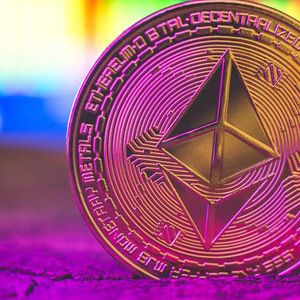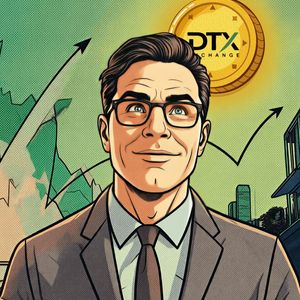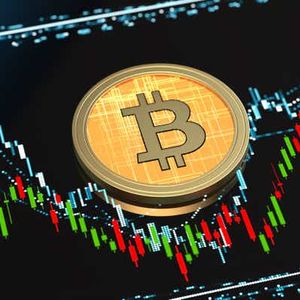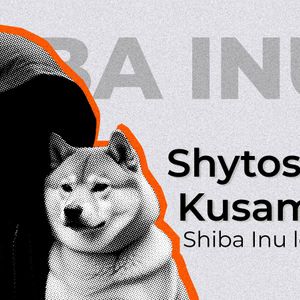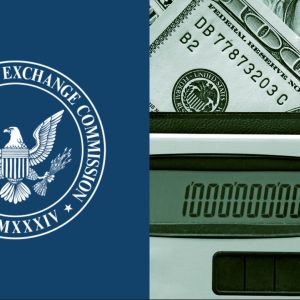Summary Staking yields for Ether have decreased from 4.2% to 3.1% due to more validators coming online, but with Ether prices doubling, the lower yields are not a concern. Interest rates play a crucial role in driving Ether prices, as lower rates make investors more willing to explore higher risk assets like Ethereum. Ethereum spot ETFs provide a regulated channel for investing in Ether's price movements, making it more accessible and less risky compared to trading on crypto exchanges. In March 2023, I covered Ethereum and while I was bullish on Ether I viewed staking as a nice to have rather than a game changer. At the time, I had a 4.2% staking yield on a net basis and the time of writing that yield is just 3.1%. I am not surprised by that, as more validators have come online the APR has tapered but with Ether prices doubling, you won’t hear me complain about the lower staking yields. More important to the bull case for Ether are application, acceptance and interest rates. Why Interest Rates Are Important To Ethereum Whether you like it or not, cryptocurrencies are still considered high risk assets and when borrowing money becomes more expensive we see that higher risk asset classes become somewhat less desired. I wouldn’t say that you are better off collecting interest on your fiat instead of receiving staking rewards because my bank still only offers 1.7% interest which doesn’t beat the 3.1% staking reward. However, the general thought flow is that once interest rates decline investors are more willing to look into higher risk asset classes and Ethereum is one of those. Perhaps, that shows even more strength of cryptocurrencies throughout the higher rate environment that currently exists. Why Ethereum Spot ETFs Are Important? Next to interest rates another driver of Ether prices is the acceptance or application fields and I believe that developments in those areas and more particularly the launch of Ethereum spot ETFs has been a buoying force for the crypto prices. Ethereum spot ETFs could provide significant support to Ethereum prices because it makes investing in Ethereum’s price movements more broadly accessible via a regulated channel. We all have seen issues with crypto exchanges such as FTX and Binance and it makes it understandable that investors would rather not walk the paths of Ethereum exposure via less regulated or capricious exchanges. So, in some way a crypto ETF catches off some of the risk and makes crypto currencies a better accessible asset class. With catching off risk I mean the possibility to own the asset and not the investment itself, which remains higher risk due to the volatility nature of cryptocurrencies. What Is An Ethereum Spot ETF? An Ethereum spot ETF aims to track the Ethereum price movement and actually holds the underlying commodity. The difference between investing in an ETH ETF and investing in ETH is that when you buy ETH, you have direct exposure to the cryptocurrency while owning through an ETF means you only own shares of ownership in the ETF but not the underlying commodity. While the ETF aims to track the price moment of Ethereum, due to management fees and supply/demand imbalances as well as liquidity in the ETF it could be the case that the ETF does not completely track the cryptocurrency price movements one-on-one. Which ETH Spot ETFs Are Available? To assess which ETH ETF might be most attractive, we have to first look which ETH ETFs have been approved. At the time of writing the following ETH ETFs are approved: Grayscale Ethereum Mini Trust - NYSEARCA: ETH Franklin Ethereum ETF - BATS: EZET VanEck Ethereum ETF - BATS: ETHV Bitwise Ethereum ETF - NYSEARCA: ETHW 21Shares Core Ethereum ETF - BATS: CETH Fidelity Ethereum Fund - BATS: FETH iShares Ethereum Trust - NASDAQ: ETHA Invesco Galaxy Ethereum ETF - BATS: QETH Grayscale Ethereum Trust - OTCQX: OTCQX:ETHE Which ETH Spot ETF Has The Lowest Expense Ratio? ETF Name Ticker Symbol Expense Ratio Waiver Grayscale Ethereum Mini Trust NYSEARCA: ETH 0.15% Waived for 6 months on first $2 billion AUM is reached Franklin Ethereum ETF BATS: EZET 0.19% Waived for 6 months on first $10 billion AUM. VanEck Ethereum ETF BATS: ETHV 0.20% Waived for 12 months on first $1.5 billion AUM. Bitwise Ethereum ETF NYSEARCA: ETHW 0.20% Waived for 6 months on first $500 million AUM 21Shares Core Ethereum ETF BATS: CETH 0.21% Waived for 6 months on first $500 million AUM Fidelity Ethereum Fund BATS: FETH 0.25% Waived until 1 January 2025 iShares Ethereum Trust NASDAQ: ETHA 0.25% Reduced to 0.12% for 12 months on first $2.5 billion AUM Invesco Galaxy Ethereum ETF BATS: QETH 0.25% No Grayscale Ethereum Trust OTCQX: ETHE 2.50% No Most ETF issuers have implemented a six month waiver. There are two ETFs without a waiver. The ETHE ETF is going to be see 10% of the ETHE ETF being rolled over to the Grayscale Ethereum Mini Trust and therefore has no waiver. The Invesco Galaxy Ethereum ETF also seems to have no waiver and a result from expense ratio perspective I don’t see why this would be the best waiver. I believe that the Grayscale Ethereum Mini Trust is most attractive because it simply has the lowest What Does The BTC Spot ETF Tell Us? Ticker AUM Fees GBTC 17.63B 1.50% IBIT 20.82B 0.21% BITB 2.57B 0.20% BTCO 495.5M 0.20% HODL 707.47M 0.00% EZBC 431.12M 0.19% FBTC 10.12B 0.25% ARKB 2,734B 0.21% BTCW 83.4M 0.25% DEFI 11.81M TBC% If we look at the BTC spot ETFs, we see that GBTC has the highest fee and most fees are around 0.2% to 0.25% with HODL being the exception with a very generous waiver period. Data by YCharts If we look at the returns, generally we see that the performance is extremely close and GBTC performs better but also has a higher fee. I would not at all draw the conclusion that higher fees are somehow resulting in better returns. The GBTC ETF is converted from a trust so it has a different launch dynamics that is not valid for all ETFs. In general, I believe that somewhat straightforward lower fees result in better performance. With that in mind, the Grayscale Ethereum Mini Trust would be my preferred pick. Buy Ether or an ETH ETF? While many analysts will likely focus on which ETF to buy, I believe that given the low fees the Grayscale Ethereum Mini Trust is the obvious choice. However, the SEC approved ETH ETFs under certain conditions and one of those conditions is that the underlying commodity cannot be staked at this point in time. For sponsors to stake the ETF, the rules once again need to be changed and that also means that in case you are willing to own Ether directly that might in fact be the more rewarding option given that you can compound staking rewards instead of paying an expense fee. The drawback is that you can easily buy shares of an ETF, but buying crypto from an exchange can take longer as you have enroll yourself in a crypto exchange, file all paperwork and then to buy and sell you have to validate your transaction. In my case, if I were to buy or sell ETH directly I would have to find my Ledger wallet, log in, log in on the crypto exchange, issue the transfer and then validate the transfer and pay fees. Buying an ETF would still result in transaction fees but purchasing and selling shares would likely happen faster and I don’t have to go look for my hardware wallet to approve the transaction. So, there are pros and cons. For the time being, I would prefer to hold the coin directly. Conclusion: Spot ETH ETFs Are A Big Step But There Could Be More I believe that the launch of ETH spot ETFs opens ETH to a group of investors that would otherwise not have exposure to crypto due to the process of buying and selling crypto being more elaborate than buying or selling shares or because getting all paperwork in order to trade on a cryptocurrency exchange might be a hassle and over the years some exchanges have put pressure on the reputation of cryptocurrencies and crypto exchanges. So, while ETH ETFs do not fully catch off risk in the sense that like with any investment risk is always an element, they make the process of buying and selling more convenient and accessible. The big question is when the underlying commodities could be staked, because that would most definitely be a game changer and could also determine which ETH ETFs are actually most attractive in the longer term. For now, if you cannot buy ETH-USD directly I would opt for the Grayscale Ethereum Mini Trust. It should also be noted that Fidelity is the only self-custody ETF, the other ETFs mostly use Coinbase as custodian. So, if you want a self-custody ETF you would want to consider FTBC as an alternative.


